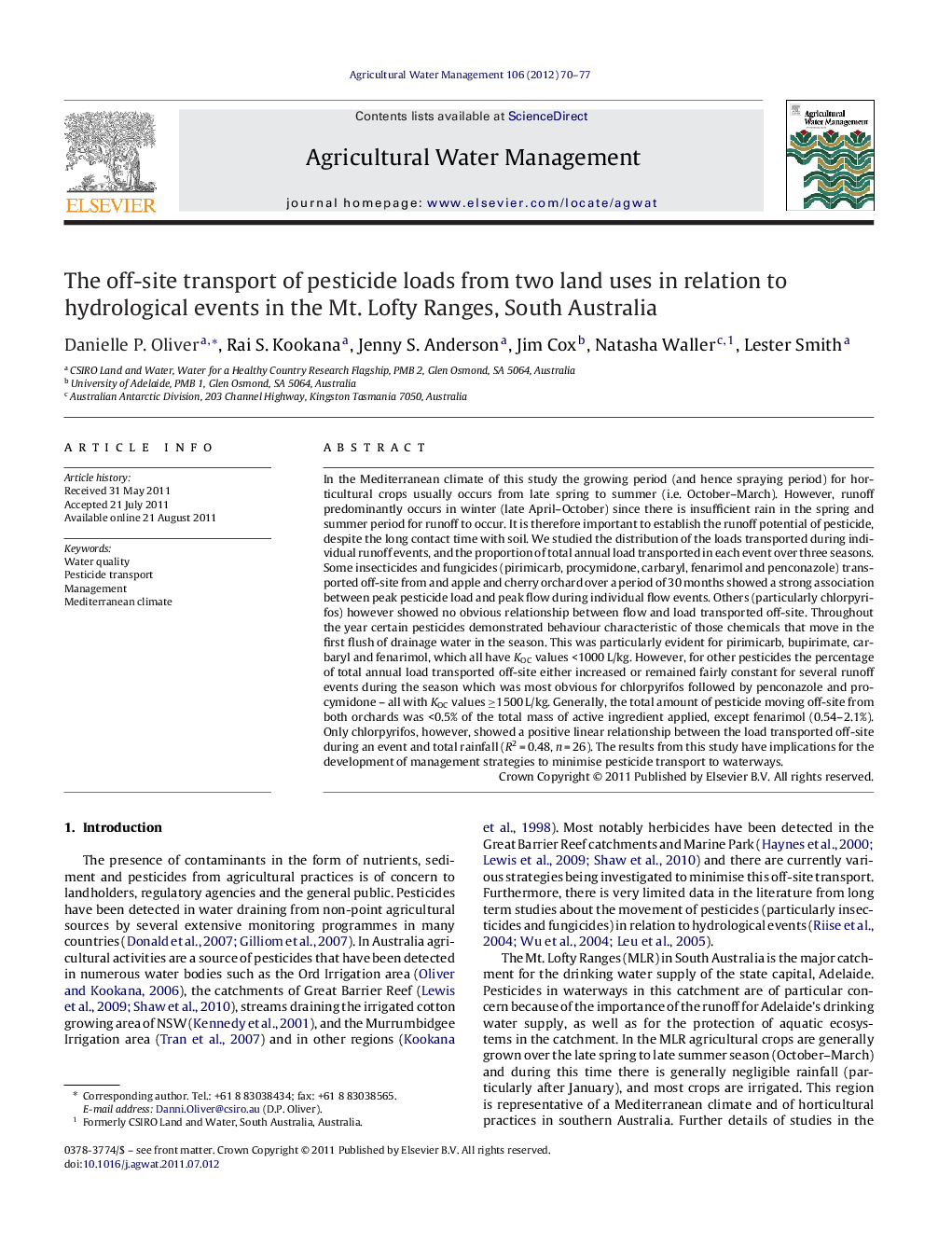| Article ID | Journal | Published Year | Pages | File Type |
|---|---|---|---|---|
| 4479149 | Agricultural Water Management | 2012 | 8 Pages |
In the Mediterranean climate of this study the growing period (and hence spraying period) for horticultural crops usually occurs from late spring to summer (i.e. October–March). However, runoff predominantly occurs in winter (late April–October) since there is insufficient rain in the spring and summer period for runoff to occur. It is therefore important to establish the runoff potential of pesticide, despite the long contact time with soil. We studied the distribution of the loads transported during individual runoff events, and the proportion of total annual load transported in each event over three seasons. Some insecticides and fungicides (pirimicarb, procymidone, carbaryl, fenarimol and penconazole) transported off-site from and apple and cherry orchard over a period of 30 months showed a strong association between peak pesticide load and peak flow during individual flow events. Others (particularly chlorpyrifos) however showed no obvious relationship between flow and load transported off-site. Throughout the year certain pesticides demonstrated behaviour characteristic of those chemicals that move in the first flush of drainage water in the season. This was particularly evident for pirimicarb, bupirimate, carbaryl and fenarimol, which all have KOC values <1000 L/kg. However, for other pesticides the percentage of total annual load transported off-site either increased or remained fairly constant for several runoff events during the season which was most obvious for chlorpyrifos followed by penconazole and procymidone – all with KOC values ≥1500 L/kg. Generally, the total amount of pesticide moving off-site from both orchards was <0.5% of the total mass of active ingredient applied, except fenarimol (0.54–2.1%). Only chlorpyrifos, however, showed a positive linear relationship between the load transported off-site during an event and total rainfall (R2 = 0.48, n = 26). The results from this study have implications for the development of management strategies to minimise pesticide transport to waterways.
► The mode of transport of 9 pesticides using 3 year continuous field data is presented. ► Transport of loads of pesticides is related to hydrological events. ► The implications for management strategies in relation to hydrological events is considered.
